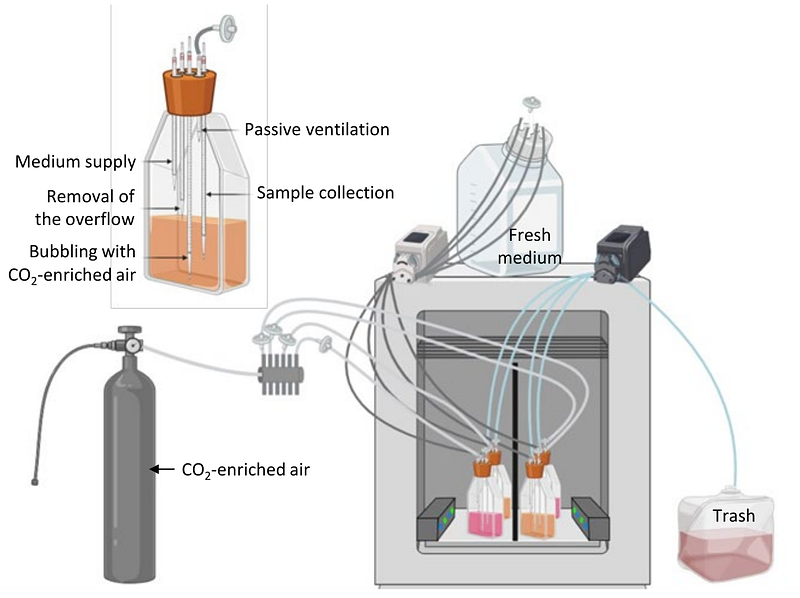Competition for light color between marine Synechococcus strains with fixed and variable pigmentation

Competition for light color between marine Synechococcus strains with fixed and variable pigmentation
Dufour, L.; Garczarek, L.; Mattei, F.; Gouriou, B.; Clairet, J.; Ratin, M.; Kehoe, D. M.; Huisman, J.; Verspagen, J.; Partensky, F.
AbstractCompetition between phytoplankton species for light has triggered an extensive diversification of photosynthetic pigments. In Synechococcus cyanobacteria, three major pigment types occur in the ocean: blue light (BL) specialists that have a high ratio of the BL-absorbing chromophore phycourobilin (PUB) to the green light (GL)-absorbing chromophore phycoerythrobilin (PEB), GL specialists that have a low PUB:PEB ratio, and cells that modify their PUB:PEB ratio to match the ambient color, a process called Type IV chromatic acclimation (CA4). The abundance of CA4-capable cells in marine ecosystems suggests that CA4 confers a fitness advantage in certain light conditions compared to cells with fixed pigmentation. This hypothesis was tested by performing mono- and co-cultures of a BL specialist, a GL specialist and a CA4-capable strain in chemostats under different light conditions. Monocultures enabled us to parameterize a resource competition model that was used to predict competition between the three pigment types in co-cultures. In line with the model predictions, the BL specialist won in low blue light and the GL specialist won in low and high green light. Interestingly, we found that while the CA4-capable strain was at a disadvantage at low light, it was able to outcompete specialists in high blue light.